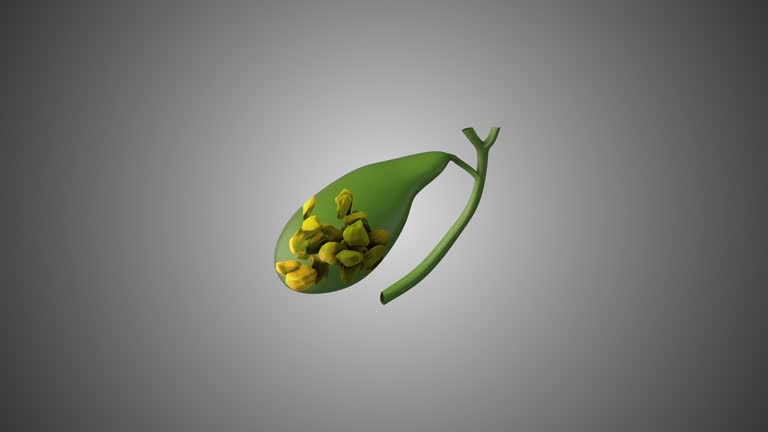19 Dec 2025
Age Specific Related to Psoriasis in Amritsar


Dr. Sunil Garg
06 Sep 2025
Call +91 80788 80788 to request an appointment.
Gallstones, also known as cholelithiasis, are a common condition that affects millions of individuals worldwide. These small, hardened deposits can form in the gallbladder, leading to a range of uncomfortable symptoms and complications. Especially prevalent in Punjab, gallstones can significantly impact an individual's quality of life if not addressed promptly.
At Livasa Hospitals, with locations including Livasa Nawanshar, Livasa Mohali, Livasa Khanna, Livasa Hoshiarpur, and Livasa Amritsar, our team is dedicated to providing comprehensive care for those affected by gallstones. Utilizing both general and laparoscopic surgical techniques, we aim to deliver effective treatment solutions tailored to each patient's needs. To schedule a consultation, contact us at +91 80788 80788 or book an appointment online.
Gallstones are solid particles that develop from bile cholesterol and bilirubin within the gallbladder, a small, pear-shaped organ located under the liver. This condition is often classified into two types:
While some individuals may live with gallstones without experiencing symptoms, others encounter severe pain and discomfort that necessitate medical intervention. With a growing prevalence in urban areas of Punjab due to dietary and lifestyle changes, understanding gallstones' nature becomes crucial for timely diagnosis and management.
Many factors can contribute to gallstone formation, and understanding these causes can aid in prevention and treatment. Some of the most common causes include:
By understanding these causes, individuals in Punjab can take proactive steps towards minimizing their risk, including implementing a healthier diet and lifestyle.
Gallstones may not always present symptoms. However, when they do, recognizing them early is vital for effective treatment. Common symptoms include:
If you experience any of these symptoms, particularly severe abdominal pain, immediate medical evaluation is recommended. At Livasa Hospitals, we offer comprehensive diagnostic services to assess symptoms and initiate appropriate care.
Diagnosing gallstones typically involves a combination of physical examinations, medical history reviews, and imaging tests. Diagnostic techniques include:
Our diagnostic team at Livasa Hospitals in Punjab is equipped with state-of-the-art facilities to ensure accurate diagnosis and effective treatment planning.
Once diagnosed, several treatment options are available for gallstones, ranging from lifestyle modifications to surgical interventions. Here's a comprehensive look at the options:
| Procedure Type | Benefits | Recovery Time |
|---|---|---|
| Laparoscopic Surgery | Less pain, shorter hospital stays, quicker recovery | 2-3 days |
| Open Surgery | More comprehensive access, may be better in complicated cases | 1-2 weeks |
The choice between laparoscopic and open surgery depends on various factors, including the patient's health status and surgeon's recommendation. Livasa Hospitals is renowned for its expertise in laparoscopic surgery, providing top-tier care to our patients across Punjab.
Recovery from gallstone surgery varies based on the type of procedure performed. Laparoscopic surgery usually results in a quicker recovery compared to open surgery. Here are several post-operative care tips:
At Livasa Hospitals, we offer personalized follow-up care, ensuring your road to recovery is smooth and monitored by our experienced healthcare team.
Understanding and managing gallstones is crucial for maintaining gallbladder health. Early recognition of symptoms and timely medical intervention can prevent complications and improve quality of life. At Livasa Hospitals, we are committed to providing high-quality gallbladder care tailored to our patients’ needs in Punjab.
Whether you're seeking diagnosis or looking for advanced treatment options like laparoscopic surgery, our seasoned specialists are here to guide you through every step of your healthcare journey. Contact us at +91 80788 80788 or schedule your consultation online.
For expert gallstone management in Punjab, trust Livasa Hospitals with your care. Book an appointment now or call us for personalized advice.
+91 80788 80788
Livasa Healthcare Group Corporate Office,Phase-8, Industrial Area, Sector 73, Sahibzada Ajit Singh Nagar, Punjab 160071
livasacare@livasahospitals.in
| Mohali | +91-99888 23456 |
| Amritsar | +91-99887 49494 |
| Hoshiarpur | +91-99883 35353 |
| Nawanshahr | +91-75081 82337 |
| Khanna | +91-98888 05394 |